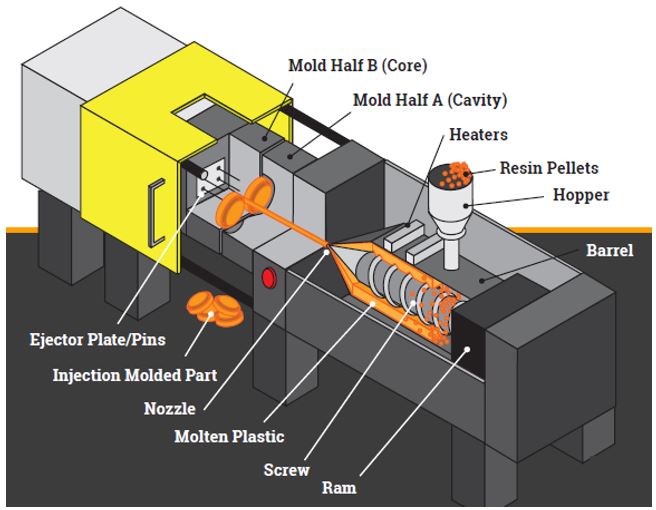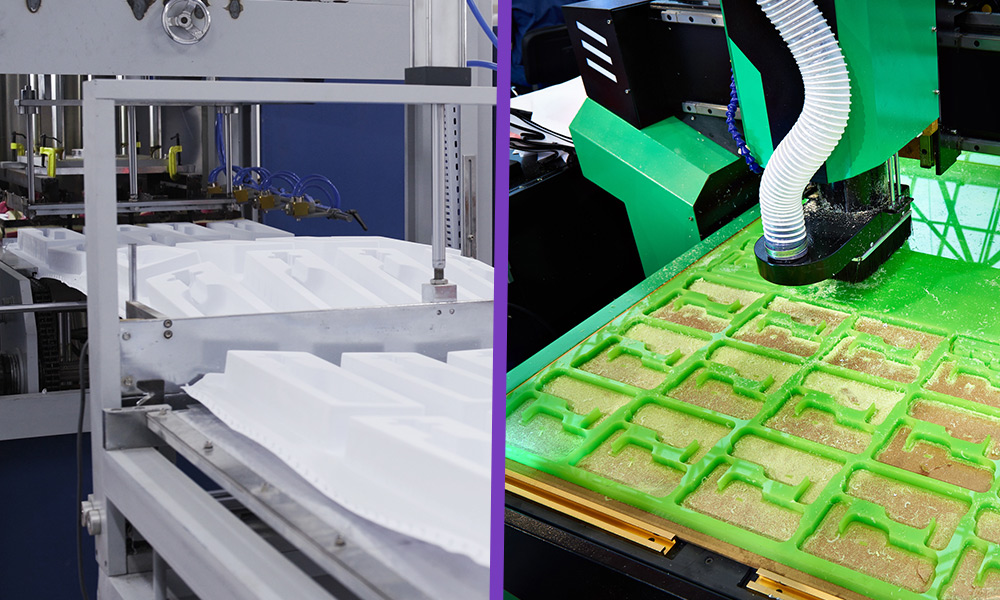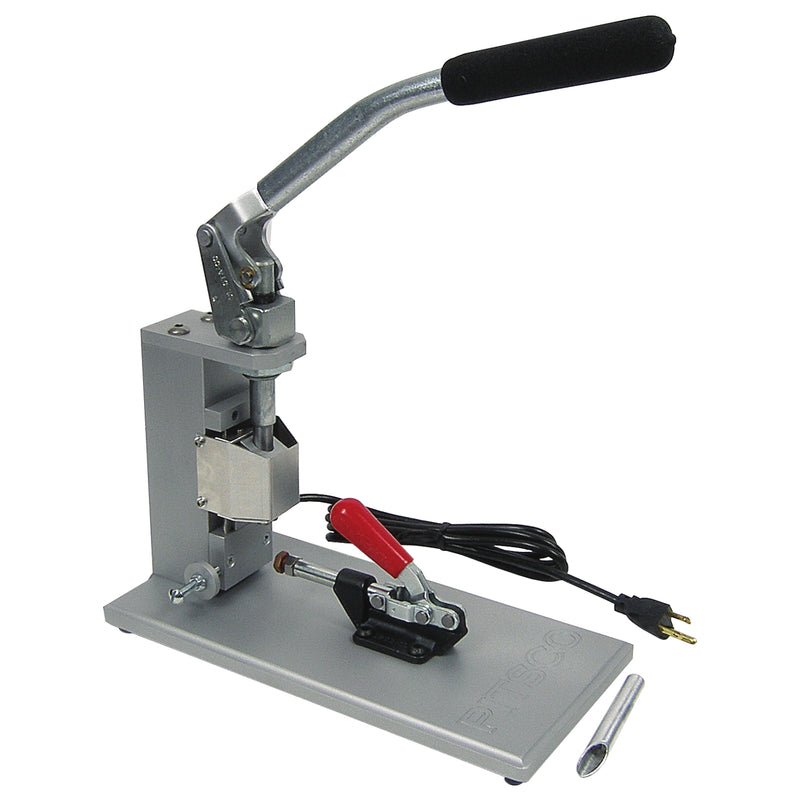Plastic Injection Molding: A Comprehensive Overview to Modern Production Techniques
Comprehending the Basics of Plastic Shot Molding Procedures
Plastic injection molding serves as a foundation of contemporary manufacturing, offering a methodical method to producing complex elements with accuracy. Checking out these necessary components might expose how even small adjustments can lead to significant improvements in production outcomes, elevating inquiries regarding the capacity for development in this recognized process.
What Is Plastic Injection Molding?
Plastic shot molding is a widely made use of manufacturing procedure that transforms polycarbonate and thermosetting materials right into precise and complicated forms. This strategy is favored for its capability to produce high volumes of the same parts with extraordinary accuracy, making it a crucial technique in numerous markets, including vehicle, consumer products, and medical devices.
The process includes thawing the chosen plastic product and injecting it right into a mold under high pressure. The mold, created to the specifications of the preferred part, enables the liquified plastic to materialize as it solidifies and cools. When the material has actually set, the mold is opened, and the finished element is ejected.
Plastic shot molding offers several advantages, including decreased waste, uniformity in manufacturing, and the capability to incorporate intricate styles that might be testing with various other manufacturing techniques. In addition, it sustains a wide variety of materials, each offering special residential properties that can be tailored for specific applications. As markets remain to introduce, plastic shot molding continues to be at the center, making it possible for the advancement of sophisticated items that satisfy progressing customer needs.
The Shot Molding Process
The injection molding process is an advanced strategy that includes a number of vital phases to create top notch plastic components. At first, plastic pellets are fed into a heated barrel where they are thawed into a thick fluid. This molten plastic is after that infused under high pressure into a precision-engineered mold and mildew, which forms the product right into the desired form.
As soon as the mold is filled up, the plastic is enabled to strengthen and cool down, taking the shape of the mold and mildew tooth cavity. Cooling time is essential, as it influences the cycle time and the last properties of the shaped part. After sufficient cooling, the mold and mildew opens up, and the finished element is expelled making use of ejector pins.

Products Used in Shot Molding
Different materials can be used in the shot molding procedure, each offering one-of-a-kind homes that cater to certain applications. The most commonly made use of products include thermoplastics, thermosetting plastics, and elastomers.

Thermosetting plastics, like epoxy and phenolic resins, go through a chemical adjustment during the treating process, causing a stiff, stringent structure. These products are suitable for applications calling for high heat resistance and architectural integrity, commonly made use of in automotive components and electrical insulators.
Elastomers, including silicone and rubber-based products, offer adaptability and resilience. Their unique residential properties make them ideal for applications that require flexibility, such as seals and gaskets.
Furthermore, specialty materials like bio-based plastics and composites are acquiring grip for their environmental advantages and boosted efficiency attributes, widening the extent of injection molding applications in numerous industries. Recognizing the residential or commercial properties of these products is vital for choosing the suitable type for details jobs.
Advantages of Injection Molding
Shot molding stands out as a very effective production procedure that supplies numerous benefits for generating intricate components with precision. Among one of the most substantial benefits is the capability to produce intricate styles that would certainly be tough or impossible to attain with various other techniques (Plastic Injection Molding). The procedure permits for limited tolerances and detailed attributes, guaranteeing premium components
Additionally, injection molding is understood for its quick production capacities, making it an excellent selection for high-volume production. As soon as the mold and mildew is produced, parts can be generated promptly, lowering lead times and increasing overall efficiency. This performance not just decreases manufacturing prices however also gives an one-upmanship on the market.
The convenience of products utilized in shot molding even more boosts its allure. A large range of thermoplastics and thermosetting polymers can be utilized, permitting suppliers to pick products that finest satisfy their certain needs, including versatility, toughness, and heat resistance.
In addition, the procedure decreases waste, as excess material can frequently be reused and recycled. This sustainability aspect adds to a decreased environmental effect, making shot molding a liable manufacturing option. Overall, the benefits of injection molding make it a preferred method for lots of sectors.
Variables Impacting Product Quality
While numerous elements can influence product high quality in injection molding, comprehending these aspects is important for see this page accomplishing optimal results. Trick aspects consist of product selection, refining specifications, and mold design.
Material option plays an important role, as various polymers display unique residential or commercial properties that impact flowability, strength, and thermal stability. Inadequate product selection can bring about flaws such as bending or incomplete filling.
Handling specifications, including stress, temperature, and cycle time, need to be diligently controlled. Variants in these setups can cause variances in component dimensions and surface area finish. Excessively high temperatures might create destruction of the polymer, while insufficient stress can result in brief shots.
Mold layout is similarly vital, as it establishes the circulation of the molten plastic and the cooling procedure. Poorly created molds might discover here lead to unequal air conditioning prices, resulting in residual stresses and dimensional mistakes.

Conclusion
Finally, plastic injection molding functions as an important production procedure that allows the efficient manufacturing of top quality components. Mastery of the injection molding procedure, including the understanding of products and the influence of various aspects on item high quality, is important for attaining optimal outcomes. The advantages of this method, such as cost-effectiveness and layout flexibility, further emphasize its relevance throughout multiple markets, solidifying its standing as a preferred choice for high-volume production.
Plastic injection molding offers as a foundation of contemporary production, supplying a systematic method to generating complicated elements with accuracy.Plastic injection molding offers several benefits, including minimized waste, consistency in manufacturing, and the ability to integrate intricate styles that might be challenging with other manufacturing approaches (Plastic Injection Molding). As industries proceed to innovate, plastic injection molding continues to be at the leading edge, enabling the growth of advanced items that fulfill evolving customer demands
The shot molding procedure is an advanced method that involves numerous essential stages to create top quality plastic parts.In final thought, plastic shot molding offers as an essential production process that enables the efficient manufacturing of premium components.